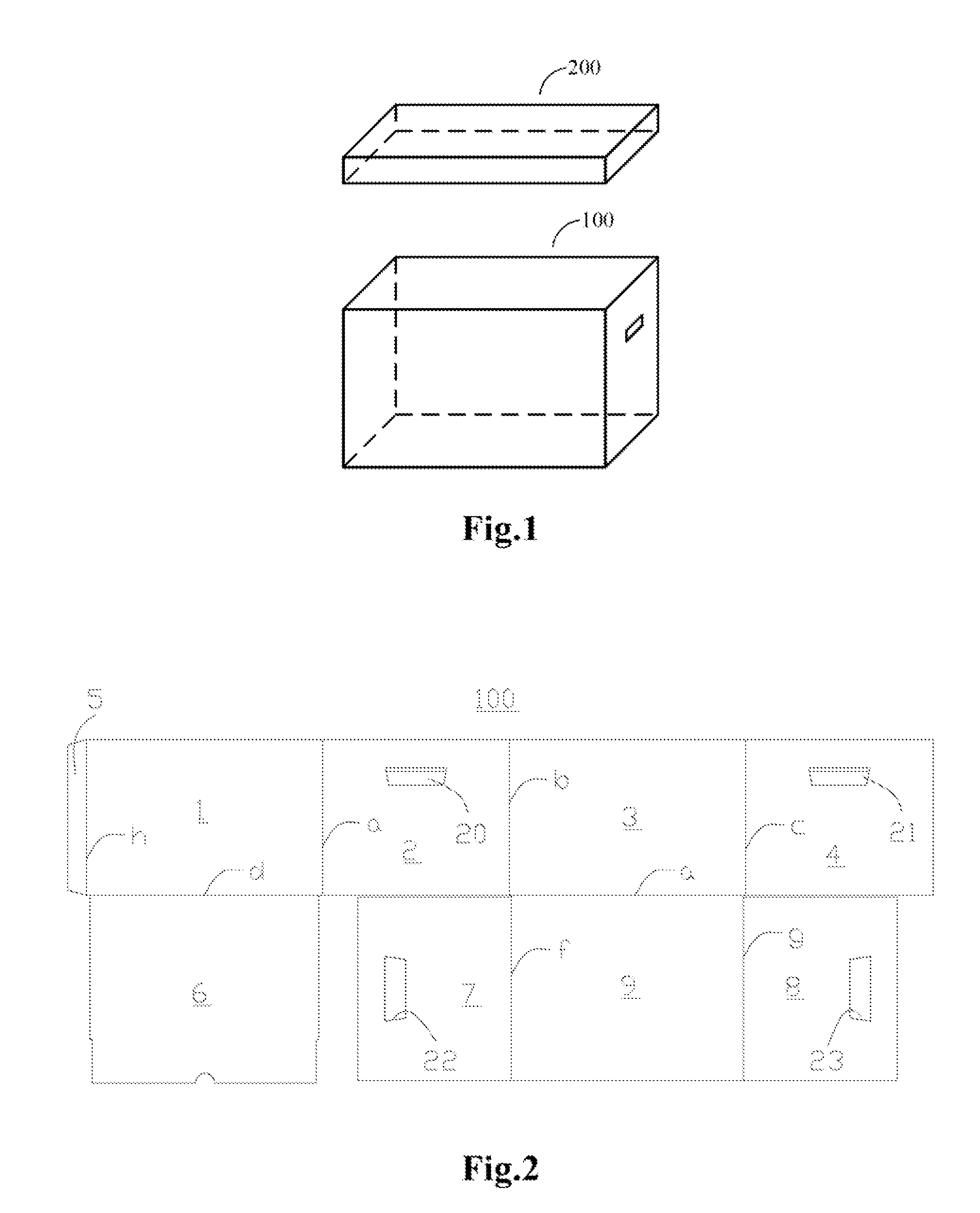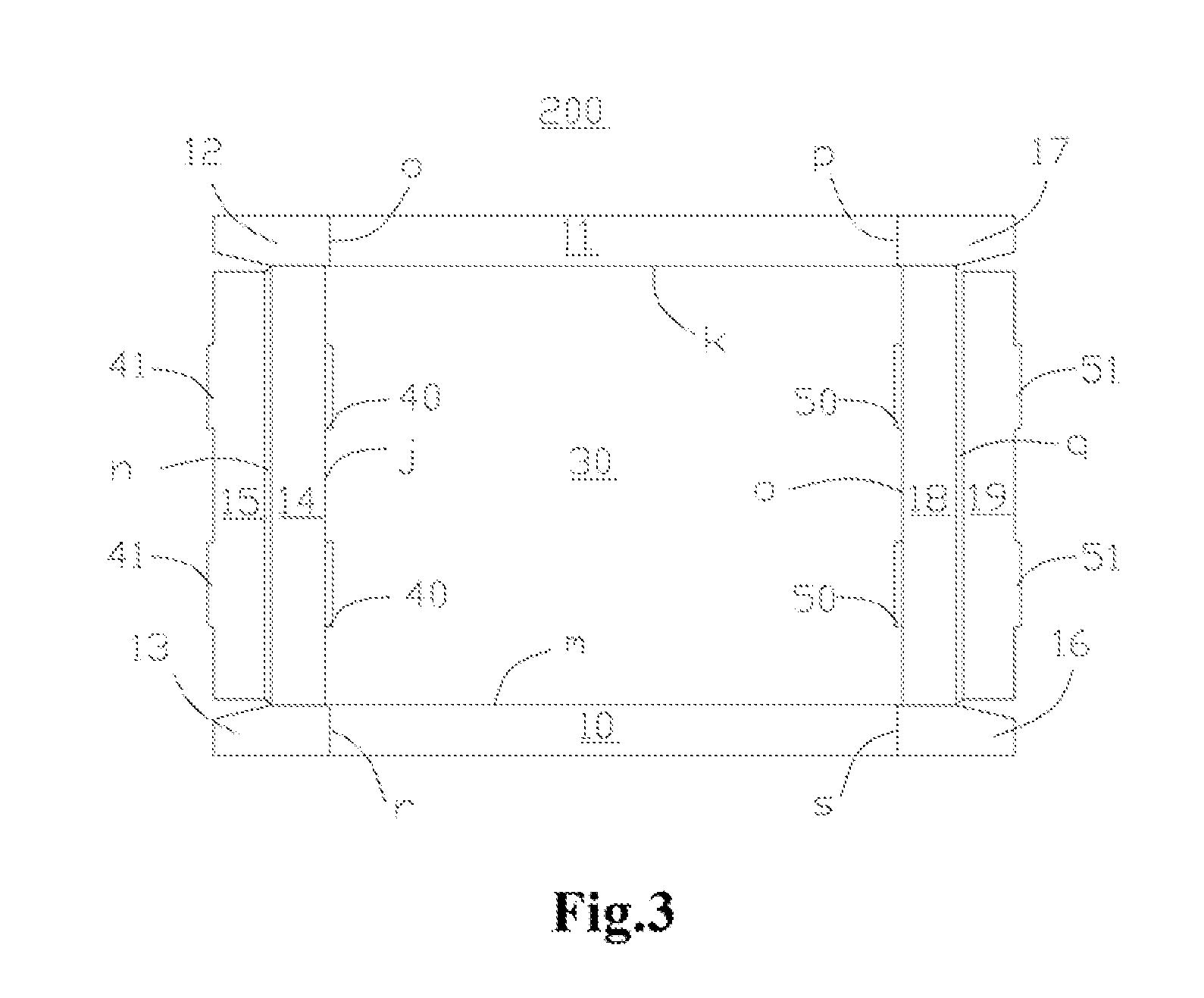Carton and method for producing the same
a technology of cartons and cartons, applied in the field of cartons, can solve the problems of high cost and complexity of production, complicated process, and high cost of cartons thus produced, and achieve the effects of simple production, low cost and beautiful appearan
- Summary
- Abstract
- Description
- Claims
- Application Information
AI Technical Summary
Benefits of technology
Problems solved by technology
Method used
Image
Examples
Embodiment Construction
[0035]For the purpose of making the objective, features and advantages of the present invention more clear, the present invention is further described and explained in details with reference to the accompanying drawings and embodiments. It should be understood that the embodiments described here intend to explain but not limit the invention.
[0036]FIG. 1 shows the perspective structure of the carton according to an embodiment of the present invention, which comprises a cubic or cuboid body 100 and a cubic or cuboid cover 200.
[0037]The body 100 can be formed from a sheet of paper board, preferably corrugated paper board, through cutting, creasing (to form creases) and folding processes. The cover 200 can also be formed from a sheet of paper board, preferably corrugated paper board, through cutting, creasing and folding processes. The formed cover 200 can be covered onto the top of the formed body 100 to constitute an integrated structure of the carton. The carton of the present invent...
PUM
 Login to View More
Login to View More Abstract
Description
Claims
Application Information
 Login to View More
Login to View More - R&D
- Intellectual Property
- Life Sciences
- Materials
- Tech Scout
- Unparalleled Data Quality
- Higher Quality Content
- 60% Fewer Hallucinations
Browse by: Latest US Patents, China's latest patents, Technical Efficacy Thesaurus, Application Domain, Technology Topic, Popular Technical Reports.
© 2025 PatSnap. All rights reserved.Legal|Privacy policy|Modern Slavery Act Transparency Statement|Sitemap|About US| Contact US: help@patsnap.com



